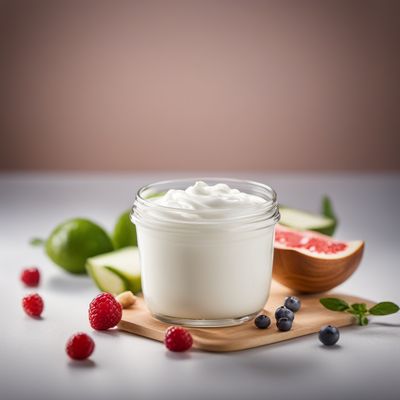
Ingredient
Imitation cream
"Creamy Delight: Unveiling the World of Imitation Cream"
Imitation cream is a non-dairy alternative to traditional cream, typically made from vegetable oils, emulsifiers, and flavorings. It possesses a smooth and creamy texture, resembling real cream, and is often used as a substitute in recipes for those who are lactose intolerant or following a vegan lifestyle. Its appearance is similar to that of regular cream, with a pale white color and a slightly thick consistency.
Origins and history
The concept of imitation cream emerged as a response to the growing demand for dairy-free alternatives. While the exact origins are unclear, the development of imitation cream can be traced back to the early 20th century when food scientists began experimenting with plant-based ingredients to mimic the texture and taste of dairy cream. Over time, advancements in food technology have led to the creation of various imitation cream products, catering to different dietary preferences and requirements.
Nutritional information
Imitation cream is typically lower in calories and fat compared to traditional cream, making it a suitable option for those watching their calorie intake. It is also free from cholesterol and lactose, making it a viable choice for individuals with dietary restrictions.
Allergens
Imitation cream may contain soy or other allergens, so individuals with soy allergies should exercise caution when consuming or using this ingredient.
How to select
When selecting imitation cream, opt for reputable brands that use high-quality ingredients. Check the label for any specific dietary requirements, such as vegan or gluten-free certifications. Additionally, ensure that the packaging is intact and within the expiration date.
Storage recommendations
To maintain the freshness and quality of imitation cream, it is best stored in the refrigerator at a temperature between 35°F and 40°F (2°C and 4°C). Once opened, it should be consumed within a few days.
How to produce
Imitation cream is typically produced on an industrial scale, but it is not commonly produced at home due to the complexity of the process and the availability of commercial alternatives.
Preparation tips
Imitation cream can be used as a substitute for real cream in a variety of recipes, including soups, sauces, desserts, and beverages. It can be whipped to create a light and fluffy texture, perfect for topping cakes or hot beverages. When using imitation cream in recipes, it is important to note that it may not provide the exact same taste and texture as real cream, so adjustments may be needed to achieve the desired result.
Culinary uses
Imitation cream is commonly used in vegan or lactose-free recipes as a substitute for real cream. It can be incorporated into dishes such as dairy-free mashed potatoes, vegan ice creams, creamy pasta sauces, and dairy-free whipped toppings.
Availability
Imitation cream is widely available in grocery stores and supermarkets, particularly in regions with a high demand for dairy-free or vegan products.



